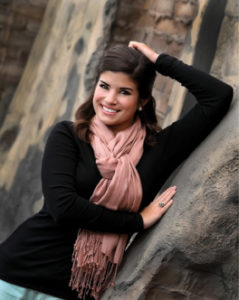By Ralph J. Romaguera, Sr.
 One of the things people have asked me about the most over the years is how I have managed to survive and thrive in the photography industry for the past 46 years. Although there are many factors that have contributed to our studio’s success, just like building a new home that you plan to enjoy for countless years to come, you start with a solid foundation. The foundation or ‘basic’ beginning to any process is so important. When you get to the symphony early, your hear musicians play their basic scales. When you get to a baseball game, you see the entire team practicing the most basic moves – fly balls, grounders, etc. So if these professionals practice their basics so often – we must ask ourselves, do we practice the basics of our craft as often as we should?
One of the things people have asked me about the most over the years is how I have managed to survive and thrive in the photography industry for the past 46 years. Although there are many factors that have contributed to our studio’s success, just like building a new home that you plan to enjoy for countless years to come, you start with a solid foundation. The foundation or ‘basic’ beginning to any process is so important. When you get to the symphony early, your hear musicians play their basic scales. When you get to a baseball game, you see the entire team practicing the most basic moves – fly balls, grounders, etc. So if these professionals practice their basics so often – we must ask ourselves, do we practice the basics of our craft as often as we should?
The last course I attended as a student at the Texas School of Professional Photography was “A Week with Dean Collins.” In a class filled with Master Photographers, someone asked Dean what the class would be about. He responded simply with, “Basics, and all you guys with ribbons need it!”
Success for me as a photographer and our studio business comes from following the basic principle that continuing education is a must. It is imperative to be reminded how to pose and light subjects to make them look as good or better than what they appear. Remembering basic lighting scenarios, ratios, the use of a light meter and that our cameras should be set on ‘P’ seldom to never.
 As an instructor for the Texas School of Professional Photography, my choice was to bring it back to the basics. During that week, not only did I share the basics of lighting from strobes to hot lights to no lights, and the marketing and sales tools, but also the basic workflow we use to keep our sanity and become financially successful.
As an instructor for the Texas School of Professional Photography, my choice was to bring it back to the basics. During that week, not only did I share the basics of lighting from strobes to hot lights to no lights, and the marketing and sales tools, but also the basic workflow we use to keep our sanity and become financially successful.
Photography is the study of light and design. These two seem to be the two things students find most challenging. To be professional, the photographer has to have confidence in his or her abilities. I have been in this profession for a long time and still every day I look at images to see what I like (or dislike) about them.
Your viewfinder is your palette, look inside – see what is wrong – correct it – everything left over is what’s right!
Posing should be flattering! That’s your job to make someone look as good or better than what they do. I like to teach the “Romaguera 2-Z” law. Whatever God gave you two of – put ’em on different levels; like feet, knees, hands, ears and eyes. Also be aware of the “One-Step” (take a step to the left or to the right, maybe up or down, notice the relationship of the subject to the background).
Lighting is another thing too many people are afraid of and it’s really simple. Good lighting helps create a three-dimensional statement out of a two-dimensional piece of paper. Learn the three S’s! Everyone deserves to be portrayed with an accurate skin tone. Anything less in value is a Shadow. Anything more in value is Specular.
Remember when it comes to going back to the basics, basic isn’t a bad word.










